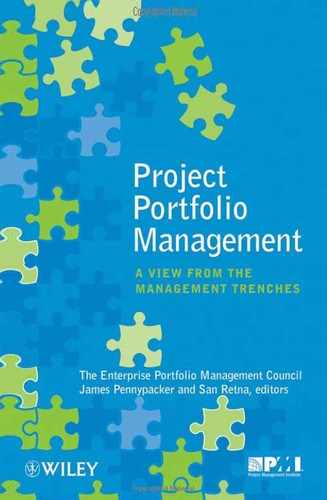4.2. SUPPLY-SIDE RESOURCE MANAGEMENT
"John, I can see that your boss was a wise man to take you on. There's not much that slips by you!" Bill leaned over and gently punched his old friend in the arm. "You are dead right. We haven't touched on managing the supply of resources—until now! I always suggest that portfolio managers. . ."
"Let me guess," cut in John. ". . . portfolio managers should keep things simple!"
"Exactly right! I suggest that you manage the supply-side using the same categories of skills, technology environment, and facilities. Let's touch on the last two first and then spend a little more time discussing skills management, since that's where you have the most potential to make a big impact across your entire organization.
"For the technology environment, you have a range of options for deploying resources in a creative way such as using an ASP model, virtualization or duplicate environments to better manage constraints. For facility supply, you can find additional space for project teams in temporary accommodations, hotels, just-in-time offices, take over a new floor in your office building, and so on."
"That all makes sense—and it's what I've been doing for one of my new projects that's just started in New Orleans. So, tell me about skill supply management." John was clearly most interested in this.
Bill continued, "Managing the supply of skills is about differentiating between your organization's core competencies—those skills and capabilities that are the essence of its competitive edge in the market—and other, more general capabilities. You really need to nurture, develop, and keep these core competencies in-house. I'll come back to these in a moment, but first let me address the other roles. All other skill-sets can be commoditized as much as possible to give you—both the portfolio and the enterprise—the ability to flex resources across the organization and into the market. By having standardized role descriptions that include specific skill requirements, by rolling out programs to cross-train your people in these so-called commoditized roles, and by enforcing best-practice documentation and audit trails in projects, you will very quickly increase your internal supply of certain categories of skill. This will also give you the option of flexing your resource needs into the market by using contractor, consulting, or partner resources."
"I like the sound of that, Bill," John said. "Give me some more detail around that."
"In my experience, the key to success with flexing into the market is in establishing and maintaining relationships with external partners so you demand resources based on your actual needs, not on an ungrounded perception that you need bodies, and you need them now. That only leads to the market taking you for a ride and your budgets being blown before you know it. Having this option to flex people, to me, is one of the keys to successful portfolio management. I don't see this as an option but an integral part of any successful portfolio people strategy. I would recommend that you select three to four partners with different competencies and geographic footprints that make the best value proposition for your business. By planning for this in advance of your actual needs you can negotiate more favorable rates so you avoid paying spot prices for outsourced labor, which are invariably higher."
"OK, that all sounds very sensible," John said. "But how do you know what resources you might need at some point in the future? Hold on, of course, I already know the answer—the demand-side skills analysis will have provided that!"
"Bravo, John! You're a quick learner."
